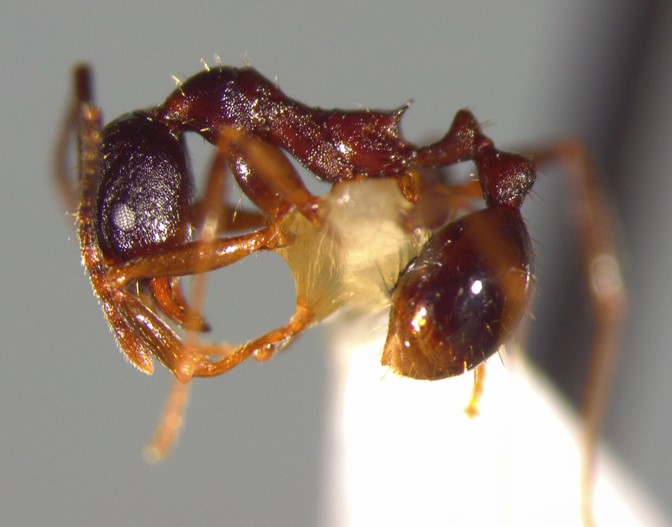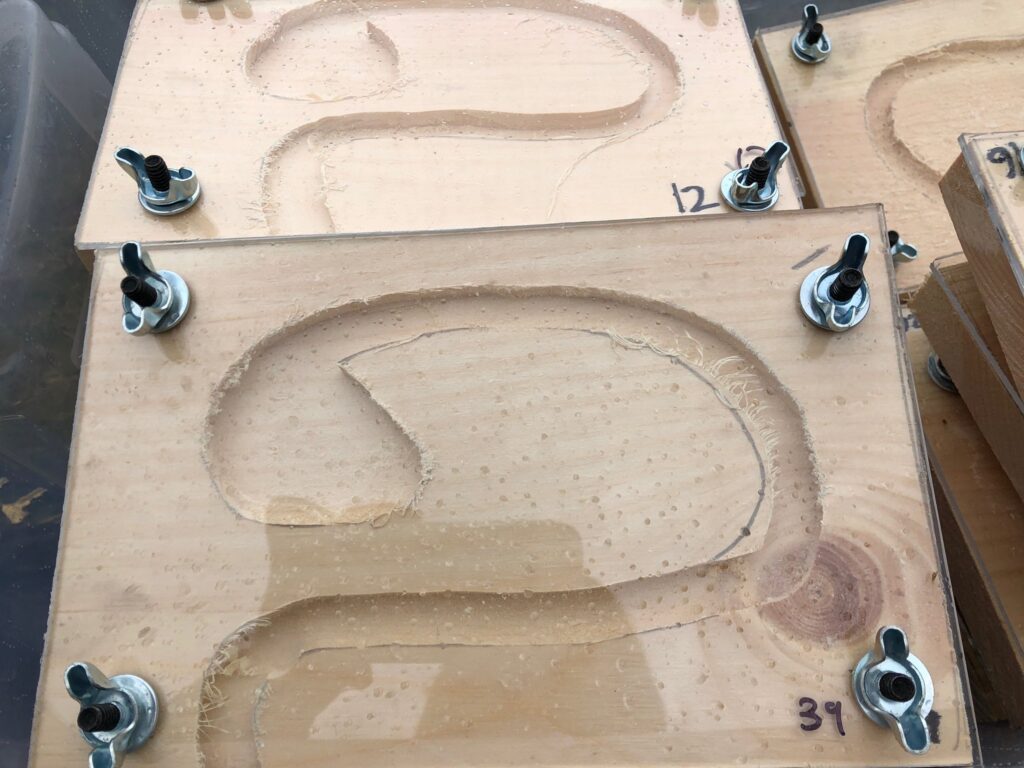Researching the role of ants in dispersing wildflowers
Carmela Buono SEBS ‘2016 is now a graduate student at SUNY Binghamton. She is using the RU EcoPreserve as a study site for her research on ants’ role in seed dispersal. Below is a short write-up of her work.


Fig 1. Ant of genus Aphaenogaster Fig 2. Experimental ant box
“Most contemporary North American eastern deciduous forests are “secondary” or previously cleared for agriculture, that have been allowed to passively regenerate once abandoned. While the tree and shrub layers have recovered in secondary forests, the understory plant layer seems less resilient to land use disturbance. Several factors likely contribute to this lack of recovery, including alteration in biotic interactions. Ants provide a key ecosystem function in forests, being the major dispersers of 30-40% of understory forbs (“myrmecochores” and we know little about how this function is affected by land use history. The keystone dispersers that are responsible for up to 74% of seed dispersal in the herbaceous layer belong to the genus Aphaenogaster (Fig. 1). I am investigating if ant-mediated seed dispersal is intact in secondary forests, by comparing this interaction between secondary and remnant forests, throughout a portion of the distribution of this mutualism in northeastern.
I am conducting a large-scale natural experiment to explore patterns of seed dispersal in remnant and secondary deciduous forests in the northeast. One of the factors that might be impacting the function of ant-mediated seed dispersal is ant partner identity. Aphaenogaster is a species complex, and in northeastern deciduous forests there are three species of Aphaenogaster (A. rudis, A. picea, and A. fulva) that are known seed disperses. However, we do not have a good grasp if they function differently as seed dispersers. That is why I am putting out “ant boxes” to help survey Aphaenogaster species across the region (from NJ to Upstate NY) (Fig. 2). Ultimately, ant-mediated seed dispersal is an ecologically important interaction and understanding how this mutualism functions in response to land use change is important to understand how we might best conserve and restore healthy forest ecosystems.
This is part of PhD dissertation work at Binghamton University (SUNY). Any questions, please contact Carmela Buono at cbuono1@binghamton.edu!”
Her work , along with others, was recently profiled in Science.
https://www.sciencemag.org/news/2020/08/don-t-crush-ant-it-could-plant-wildflower